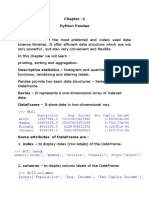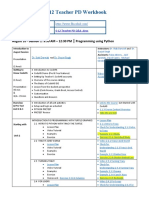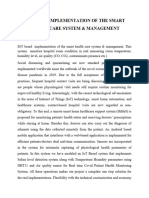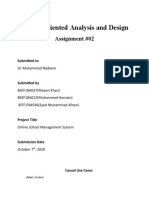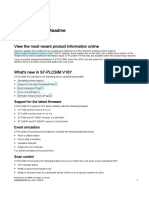0% found this document useful (0 votes)
47 views6 pagesPython 2.1.3
The document provides an overview of various data manipulation techniques in Pandas, including merging and joining datasets, aggregation and grouping, creating pivot tables, vectorized string operations, and working with time series data. It also introduces high-performance functions like eval() and query() for efficient data evaluation and filtering. Examples are included to illustrate the usage of each technique.
Uploaded by
hritikp266Copyright
© © All Rights Reserved
We take content rights seriously. If you suspect this is your content, claim it here.
Available Formats
Download as DOCX, PDF, TXT or read online on Scribd
0% found this document useful (0 votes)
47 views6 pagesPython 2.1.3
The document provides an overview of various data manipulation techniques in Pandas, including merging and joining datasets, aggregation and grouping, creating pivot tables, vectorized string operations, and working with time series data. It also introduces high-performance functions like eval() and query() for efficient data evaluation and filtering. Examples are included to illustrate the usage of each technique.
Uploaded by
hritikp266Copyright
© © All Rights Reserved
We take content rights seriously. If you suspect this is your content, claim it here.
Available Formats
Download as DOCX, PDF, TXT or read online on Scribd
/ 6














